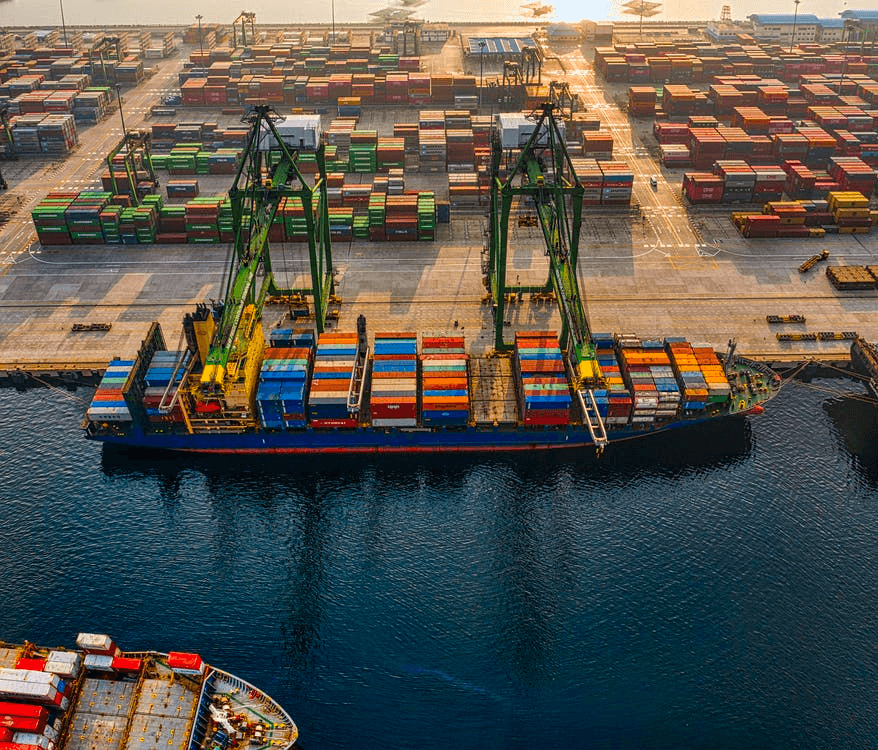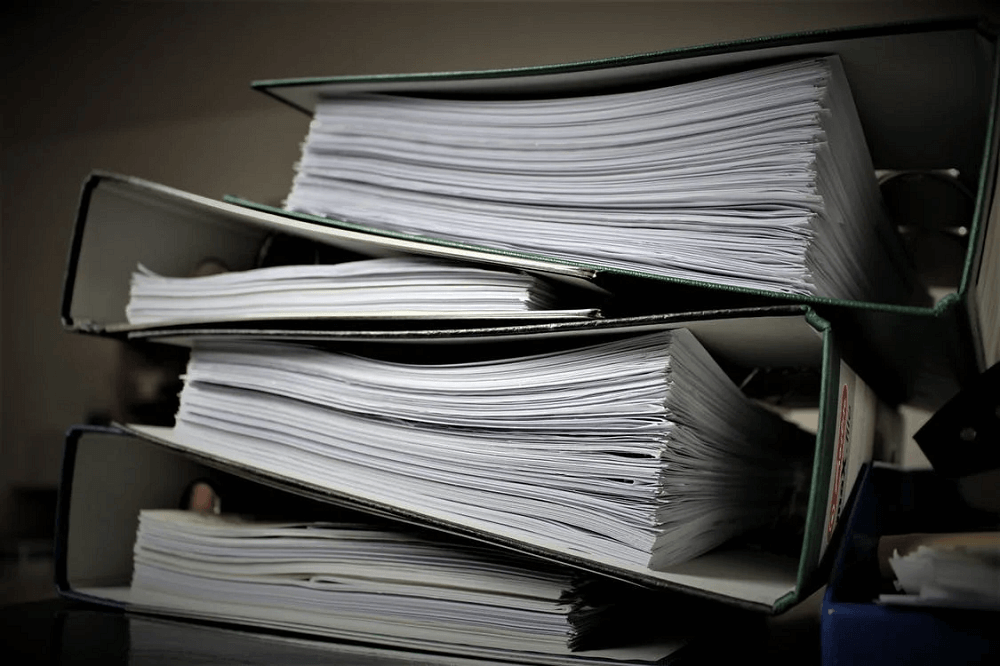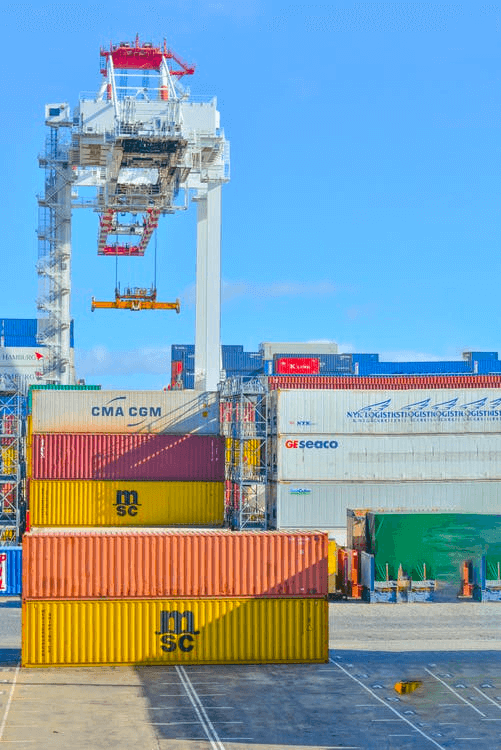
by Sam Franklin | June 15, 2022 | 11 min read
Understanding the Free on Board (FOB) Incoterm
Get fundedLast updated: July 08, 2022
With shipping being the final step in completing a sale, it is often the last thing thought about by both buyers and sellers.
With the sheer number of moving parts in the shipping process and the different shipping options available, it can become challenging to know where responsibilities lie. This is why the International Chamber of Commerce created the Incoterms shipping policies.
If you are searching for a shipping policy that evenly splits responsibilities between both parties, then FOB might be the right choice for you.
This article will cover everything you need to know about the FOB Incoterm.
If you’re looking for information on the other Incoterms, see our Incoterms Overview section.
Table of contents
- What is Free On Board (FOB)?
- Understanding Free on Board (FOB)
- When to use FOB
- When not to use FOB
- Advantages of FOB
- Disadvantages of FOB
- FOB vs. other Incoterms
- Conclusion
What is Free On Board (FOB)?

FOB is an international trade term created by the International Chamber of Commerce (ICC) in 1936. FOB stands for Free on Board, and it dictates where the responsibilities are split between the buyer and seller during the shipping process of international transactions.
There are two forms of FOB: FOB Origin (or FOB Shipping Point) and FOB Destination.
With FOB Origin, the seller is responsible for transporting the goods from the origin point (warehouse) to the shipping point. They are also responsible for loading the cargo onto the ship. The responsibility transfers to the buyer as soon as the goods are loaded onto the nominated shipping vessel. The buyer takes responsibility for the remainder of the transport, including the delivery to the destination port.
In a nutshell, in FOB Shipping Point (or FOB Origin), the seller is responsible for loading the goods onto the vessel. The buyer is responsible for everything else necessary to get the goods to the final destination.
With FOB Destination, the seller is responsible for transporting goods from the origin point to the shipping point. They are also responsible for loading the cargo onto the vessel and paying the costs of shipping the freight to the buyer’s named port. The buyer then takes responsibility for the goods once they have arrived at the named port.
Understanding Free on Board (FOB)
The FOB Incoterm is the most commonly used agreement between international buyers and sellers when the delivery of cargo is shipped via sea. This is because it splits the responsibilities between buyers and sellers relatively evenly.
FOB shipping only applies to sea and inland waterway modes of transport in the vast majority of countries. However, in North America, the term FOB has been expanded for all types of transportation under the Uniform Commercial Code (UCC).
Interestingly, the ownership for the goods transfers when the freight is loaded onto the truck from the origin point (the seller’s premises). However, cargo ownership is typically independent of the FOB Incoterm. Traditionally, the ownership transfer is defined in the contract of sale and bill of lading.
The risk transfer occurs at a different point when the goods are actually loaded onto the shipping vessel.
When a seller quotes a FOB shipping term, they will usually include either the port of origin or the port of destination in the title to show if they are quoting for FOB Shipping Point or FOB Destination.
For example, let’s say you were importing goods from Thailand to the UK. If the supplier used FOB Bangkok, it would indicate that the seller is responsible for the goods until they are loaded on the vessel in Bangkok. In this case, you would be responsible for arranging the shipment to be shipped to the UK. On the other hand, if the seller were to use FOB Portsmouth, this would indicate that the seller is responsible for the goods from the moment they leave the warehouse in Bangkok to the point it reaches the arrival port in Portsmouth.
What do Free on Board (FOB) shipping terms include?

As mentioned, there are two distinct types of FOB shipping terms, and there are additional add-on terms that buyers use to reduce or extend the responsibility to the seller in FOB shipping.
Typically, the two other add-on terms are Freight Prepaid and Freight Collect.
Here is what they mean when added to the original FOB incoterm:
FOB Shipping Point, Freight Prepaid - The seller pays for the entire shipping delivery, but the buyer assumes responsibility for the goods from the Shipping Point.
FOB Shipping Point, Freight Collect - The buyer pays for all freight costs to the destination port and assumes liability from the Shipping Point.
FOB Destination, Freight Prepaid - The seller delivers and pays all shipping costs until cargo arrives at the buyer’s destination port. Then, the buyer bears responsibility at the destination port.
Fob Destination, Freight Collect - The buyer pays all freight charges but does not take responsibility until the cargo gets to the destination port.
Following is a list of standard terms seen in a FOB agreement:
The time and place for delivering the goods.
If the shipping policy is FOB Origin or FOB Destination, with any additional add-on terms.
Where the transfer of risk occurs.
Who pays the freight costs.
Which carrier will be used (as dictated by the buyer in terms of sales).
Which governing laws are being used for international trade.
Typically, all FOB terms are made clear in the purchase order between the buyer and the seller.
In the FOB Incoterm rules, it is essential to note that insurance is not obligated to the buyer or seller. Instead, if there is an insurable interest on board, the insurance costs are usually covered in the terms of sale.
Seller’s responsibilities
In FOB, a seller is responsible for:
Supplying the goods according to the sales contract
Delivering goods from the point of origin (the warehouse) to the point of shipment
Delivery cost to the point of destination (in FOB Destination)
Export licence
Commercial Invoice
Packing list
Export packaging
Export clearance, duty, and taxes
Loading costs
Terminal handling charges
Proof of delivery documents
Any additional local charges and other costs, such as inspections in the origin country
Buyer’s responsibilities
In FOB, a buyer is responsible for:
Purchasing the goods as dictated by the sales contract
Pre-shipment inspection from shipping point
Freight transportation from shipping point (in FOB Origin)
Unloading goods at the destination port
Any further inland transportation to the final destination
Ocean freight receipts
Goods invoice
Import formalities, such as import clearance, taxes, and duty
Where are the risk transfers in FOB?
In Free on Board, the risk transfer occurs when the seller loads the goods onto the vessel. However, both buyer and seller must agree upon what “Loaded on Board” means in the sales contract as it's different for various types of vessels.
Previously, the Incoterms suggested that a ship’s rail serves as the point where the goods were loaded onto the vessel. However, under Incoterms 2020, the loading is fulfilled only when the goods are on board the ship and the cables are no longer holding the container.
When to use FOB

FOB is viable for most bulk cargo and non-containerised goods shipped by sea or inland waterway transport. The seller will typically choose FOB if they have direct access to loading the goods onto the shipping vessel.
FOB is most widely used to import products from Asia to the UK and is best used when a buyer uses a China Freight Forwarder to organise the shipments as it offers a low unit pricing for the cargo.
When not to use FOB
FOB cannot be used for inland or air transport. It is restricted to just sea or inland waterway freight.
Additionally, FOB should not be used for containerised cargo because it becomes impossible to pinpoint when any potential damage occurs, making it difficult to determine who is liable between the buyer and seller.
Advantages of FOB
One of the main advantages of FOB is that each party’s responsibilities give most control while the cargo is in their territory and allows them to handle customs clearance in their own jurisdiction.
FOB is advantageous for the buyer because it provides more flexibility and control over the logistics and shipping costs as they can choose their own shipping methods. Additionally, FOB lowers the buyer’s dependence on the seller if something goes wrong during the delivery as they have direct contact with the logistics company.
Furthermore, the buyer can select one freight forwarder for the entire shipment. This allows them to rely upon one single company for the whole of the delivery process and mitigates any potential miscommunications between separate shipping companies.
Lastly, FOB tends to be the most cost-effective shipping option for the buyer as they can shop around for the best shipping rates available to them.
In addition to this, FOB is advantageous to the seller as they are not responsible for arranging the marine transportation (in FOB Origin) or any insurance. The seller can also consider the sale completed once the cargo has been loaded onto the shipping vessel.
Sellers are not held responsible for any in-transit loss once the goods are on board. Finally, the seller is typically knowledgeable on all export documents required in their own country, making the process fairly straightforward for them.
Disadvantages of FOB
Relative to other Incoterms, there aren’t too many disadvantages of using FOB. However, there are some slight concerns to consider.
For the buyer, there are potential situations where they might be responsible for covering costs before the goods are on board the vessel. For example, if loose cargo is shipped (i.e., not a full container load), goods must go through a Container Freight Station to be consolidated into one container. Typically, sellers won’t cover these costs unless explicitly stated in the sales contract.
Additionally, the buyer doesn’t have the opportunity for the delivery to be made to its final destination. Instead, the goods arrive at their destination port, and the buyer must arrange any onward carriage to the warehouse.
Furthermore, relative to other Incoterms available, there are added steps with FOB. Therefore, it might not be suitable for new buyers due to the added responsibilities and increasing risk.
The disadvantages to the seller are minimal. However, the seller must still arrange and pay for export permits and the transit from the origin point (warehouse) to the shipping vessel.
FOB vs. other Incoterms

CIF vs. FOB
Cost, Insurance, and Freight (CIF) is an Incoterm where the seller is responsible for arranging the shipping and paying for the insurance of the goods. However, the CIF incoterm places a little more responsibility on the buyer’s side as it requires them to arrange the shipment to the destination port and pay any relevant charges there.
The risk transfer is relatively similar for both Incoterms, with CIF stating that the risk transfer occurs when the goods are loaded on the shipping vessel bound to the destination port.
DDP vs. FOB
Delivered Duty Paid (DDP) places the maximum responsibility on the seller’s side. Under DDP, the seller is responsible for arranging the shipment to the destination port, paying charges at the destination port, and loading goods onto the truck there.
DDP also requires sellers to transport goods to the final location and pay for any relevant import customs formalities.
The risk transfer for DDP occurs when the goods are made available to the buyer at the final destination.
FCA vs. FOB
Free Carrier Agreement (FCA) provides a similar split of responsibilities between buyers and sellers. In FCA, the buyer is also responsible for any charges that occur at the origin port, such as pre-carriage inspections.
However, the risk of transfer is different in both Incoterms. In FCA, the transfer risk occurs when the seller loads the goods onto the freight forwarder nominated by the buyer.
Conclusion
Free on Board is an Incoterm that evenly splits the responsibilities between buyers and sellers.
As the buyer has the option to be in charge of handling the shipping from the origin port (in FOB Origin), it provides much more flexibility in hunting down the best prices. This also allows them to build a relationship with a freight forwarder to make the delivery process smooth, with less dependence on the seller.
Alternatively, the buyer can choose FOB Destination and allow the seller to handle the shipping.
Written by

Sam founded his first startup back in 2010 and has since been building startups in the Content Marketing, SEO, eCommerce and SaaS verticals. Sam is a generalist with deep knowledge of lead generation and scaling acquisition and sales.


